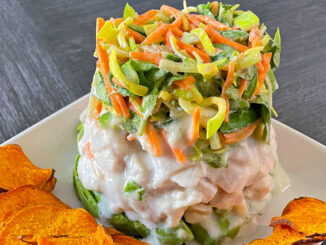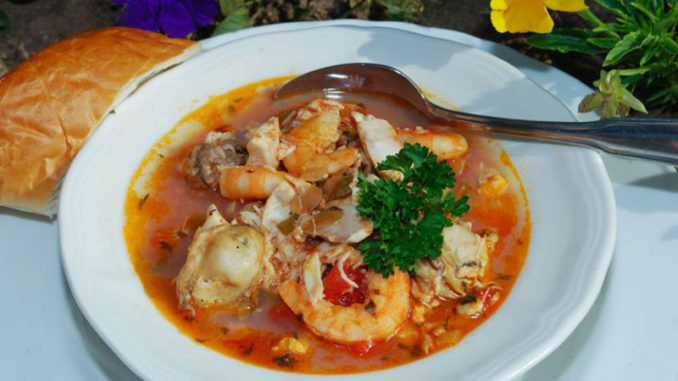
Featured red snapper recipe from old Golden Meadow restaurant
Ricky Ruffin lives with his wife Pam near Bay Springs, Mississippi. And he’s got all the credentials to prove that he’s Magnolia State all the way.
His great-great-grandfather settled on former Indian land there in Jasper County in 1842. His Ruffin ancestors and relatives were cotton farmers, with the exception of his father, who raised beef cattle.
On his mother Martha McAlpin’s side, her great- great-grandfather patented land there in the 1850’s. But the apple didn’t fall from the tree. While Ricky is a successful attorney by day, the rest of the time he raises cattle on rye grass and wheat in the winter.
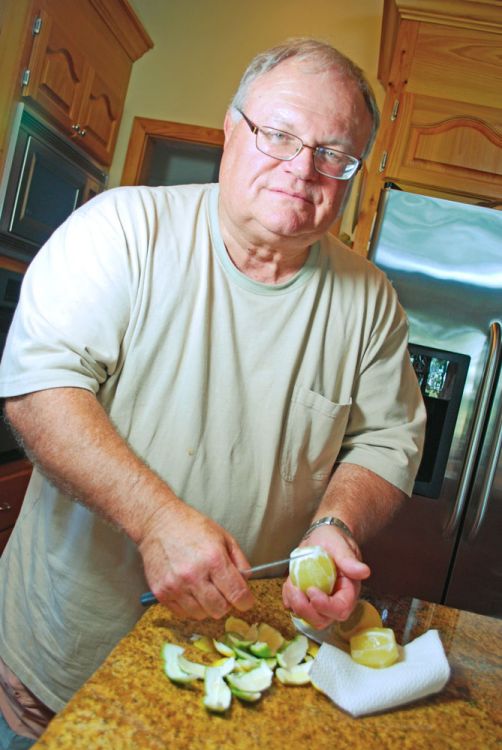
For all the Mississippi in the man, he loves Louisiana. He enjoys the people, who he calls, “my kind of people, who like to have a good time. I love Cajun people. They love to hunt; they love to fish; they love to cook.”
He loves the cooking, which he calls the best in the world. And he loves the fishing, which he considers as good as the cooking.
Four or five times a year, he rounds up a gang of his Mississippi friends and relatives to invade Louisiana, where they head offshore from Fourchon. He loves to catch fish that pull hard: snappers (the bigger the better), groupers, amberjacks, cobia, wahoo and tuna. “I like offshore fishing; the adrenaline rush of catching a big fish. You can’t get that from speckled trout.”
And he fills his freezers with his share of the catch to satisfy his passion for seafood cookery year round.
We have paired Ricky’s recipe with one of our originals, a re-creation of the one dish that most represents San Francisco, a cioppino. For soup lovers, this one is delightful and light, but still loaded with seafood.
Panéed Snapper with Meunière Sauce
“This one I ate at Randolph’s restaurant in Golden Meadow,” said Ricky, explaining the history of the dish. “He (Randy Cheramie) used to put pecans in it. I leave the pecans out. We got to be friends because we were going down there to fish twice a month from March to July. He gave me the recipe.
“He would have four specials on Saturday night. The kind of specials he had were the kind of cooking I like. He did a lot of sauces, plus he cooked a lot of the kind of fish I like — amberjack, snapper and lemonfish.”
Randolph’s is closed now: The Cheramie family sold it in 2001 and a few years later, it was permanently closed and the building demolished. But the recipe lives on in Ricky’s kitchen.
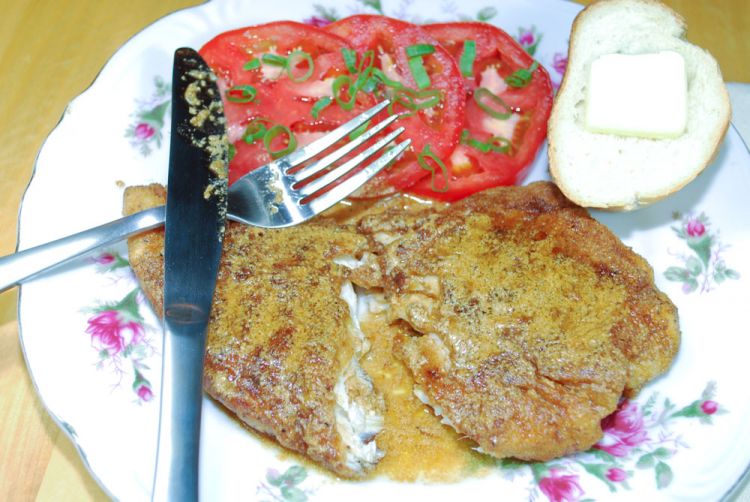
Tip: Where this recipe calls for “Season-All,” Ricky uses his favorite Catalpa Plantation Seasoning. It can be ordered by calling 1-800-417-9591.
INGREDIENTS:
- 1/2 cup Worcestershire sauce
- 6 tbsp. Crystal hot sauce
- 1 lemon, peeled and cut into small pieces
- 1 lime, peeled and cut into small pieces
- Season-All
- 1/2 lb. butter
- 1/2 cup half & half
- 2 lb. snapper fillets
- 1 cup seasoned fish fry
- 1 cup flour
- 1 cup grape seed oil
- 1 stick butter
PREPARATION:
Serves 4.
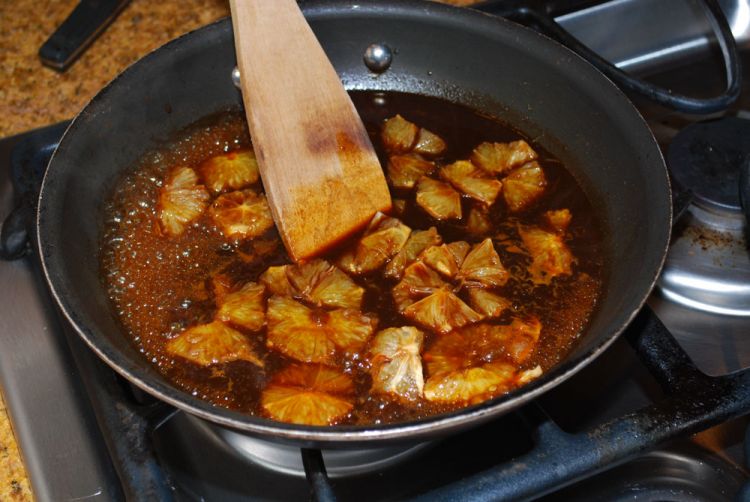
Add Worcestershire and hot sauce to a medium sauce pan. Stir lemon and lime pieces and 1/2 tsp. Season-All into the sauce and sauté about three minutes, breaking up the citrus pieces as they cook. Remove the remnants of the lemon and lime pieces, lower heat and add the butter. Do not allow to boil. Slowly add half & half, whisking constantly. When the meunière sauce has thickened, turn the heat off and set it aside. Season the fillets with Season-All. Mix the fish fry and flour in a bowl. Dredge the fish in the fish fry mixture. Heat the grape seed oil and butter in an iron skillet. When heated, add the fillets and fry until browned. Plate the finished fillets and top them with the meunière sauce.
Cajun Cioppino
On a 1999 visit to San Francisco, we had the pleasure of eating cioppino, considered to be the city’s signature dish. Cioppino is to San Franciscans what gumbo is to Louisianans. Cioppino (pronounced chuh-PEE-no) is basically a fish stew. Supposedly, the dish evolved in San Francisco from northern Italian immigrant fishermen. Must-have ingredients include tomatoes, wine and spices. But the dish is wonderfully versatile in that almost any kind of seafood can be used. A California cioppino will use Dungeness crabs, mussels and clams. Here, we use blue crabs, shrimp and oysters. The choice of fish to use is endless, just so long as it is a firm-fleshed species that will not cook apart in the liquid. Freshwater fish, inshore fish and offshore fish work equally well. Our last one used redfish, the one before that used mangrove snapper… You get the idea.
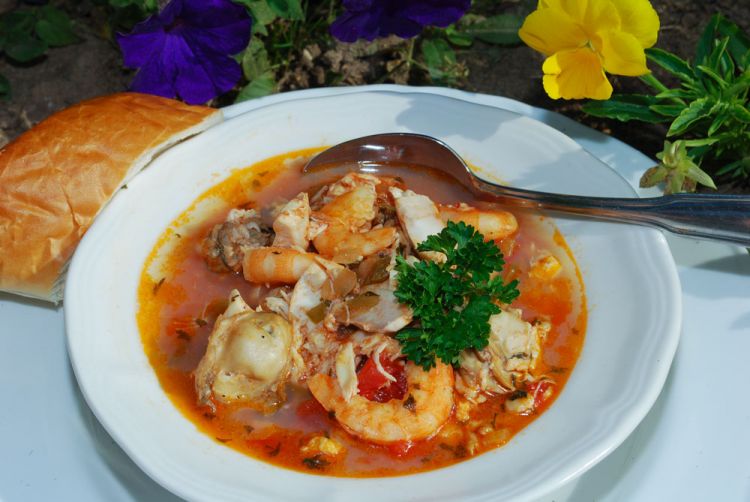
INGREDIENTS:
- 1/2 cup olive oil
- 1 large onion, chopped
- 1 bell pepper, chopped
- 3 cloves garlic, minced
- 1 28-oz. can diced tomatoes
- 2 tbsp. tomato paste
- 2 cups dry white wine
- 1/2 cup chopped fresh parsley, divided
- 2 tsp. salt
- 1 tsp. black pepper
- 1 lb. crabmeat
- 1 lb. peeled medium shrimp
- 1 1/2 lb. fish, cut into 1 1/2 inch cubes
- 3 dozen small shucked oysters
PREPARATION:
Serves 6
Pour olive oil into a medium-sized saucepan. Add onion, green pepper, and garlic and sauté until soft. Add tomatoes, tomato paste, wine, half of the parsley, salt and pepper. Bring to a boil, lower heat, cover and simmer for 15 minutes. Place crabmeat, shrimp, fish, and oysters in a large saucepan. After simmering the sauce, pour it over the seafood. If the sauce doesn’t cover the seafood, add water. Bring to a boil, cover and simmer a maximum of 10-12 minutes or until the fish is white and flaky and shrimp are pink. Do not overcook because the fish will fall apart. Garnish with parsley and serve in large bowls with French bread.
